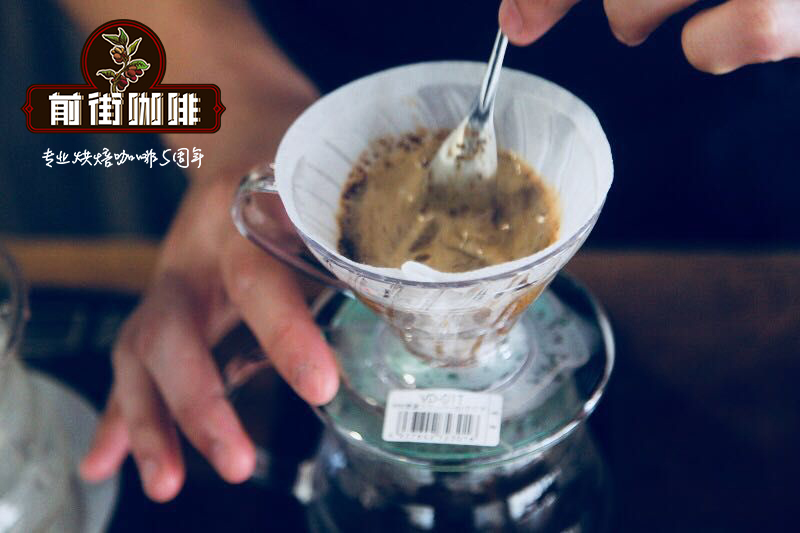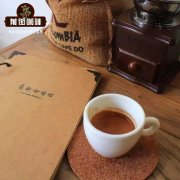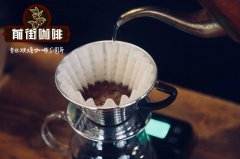Is the coffee powder too troublesome? Let you understand it in a second! You don't have to ask how to drink or grind the coffee powder!

Professional coffee knowledge exchange more coffee bean information please follow the coffee workshop (Wechat official account cafe_style)
Coffee powder _ how to cook coffee powder _ how to brew coffee powder
Drinking coffee is really becoming more and more popular, and it is becoming more and more popular. Although the price of coffee in the coffee shop is not so close to the people, the trend of making your own coffee has come. I have previously introduced several quick and simple coffee brewing appliances (you can find practical information by looking at previous issues). You can enjoy freshly ground coffee at home / dormitory without going to a coffee shop. ), have the friends chosen what is suitable for them? So next, let's talk about coffee powder, especially the thickness of coffee powder and the matching of different utensils. I know, as soon as I hear that I have to grind my own coffee and learn to adjust the appropriate thickness, I really feel a headache. BUT, that's all past tense! Today, I will give you a detailed illustration of coffee powder, so that you can understand it in a second, and fall in love with the process of grinding coffee.
1. Why grind your own coffee powder?
In fact, many shops that sell coffee beans can grind coffee droplets for free, and they may even ask you about the most suitable thickness of the equipment you use. Then why do we have to grind it ourselves? Just to pretend to be forced (chuckle)?
In fact, the coffee powder we grind increases the surface area of coffee beans by 1000 times, making the extraction (the process in which water passes through the coffee powder and takes away water-soluble substances, known as "extraction") more effective. Different utensils in the extraction, the way and efficiency are different, in order to rush out the best taste, you will need different sizes of coffee powder. If you only use one kind of utensils to make coffee and children's shoes that have just started to drink coffee, you can ask the store to help you grind them first. Wait for you to develop the habit of drinking coffee, and then to understand the thickness of your own utensils, slowly into the pit to grind yourself.
In addition, even if it is the same appliance, everyone's favorite taste will be more or less different. At this time, if the coffee powder ground in the store is not suitable for your own taste, there is no way to change it. If you grind yourself, on the one hand, you can adjust the thickness according to the utensils used each time, and on the other hand, you can try different tastes and find the one that suits you best. Even when I flushed it with my own hands, I tried to adjust the thickness several times.
Another reason to grind your own coffee powder can also be said to be good, it is a "fresh" problem. We all know that the preservation time of coffee beans should not be too long, in fact, accurately speaking, the preservation time of cooked beans should not be too long. Raw beans can be preserved for quite a while without losing their flavor. So if you have enough patience and curiosity, you can also buy raw beans, , you can better preserve them, and experience the process of roasting coffee beans. Aung, I dug another hole for myself, and then I filled it out slowly. In other words, roasted coffee beans are generally stored in bags with one-way exhaust valves, which can prevent outside air from entering and affect the flavor of coffee beans, and can also discharge carbon dioxide produced by coffee beans. Even so, if it is ground into powder, the flavor of coffee will be lost much faster than coffee beans because of the increase in surface area. It is even said that the best taste period for roasted coffee beans is no more than 7 days, while coffee beans that last more than 15 days can be thrown away. Of course, it doesn't mean that the coffee beans will go bad after 15 days. When I buy roasted coffee beans, I usually buy two varieties at a time and drink them instead, so it takes about a month or so, and the flavor of the coffee must be lost. it's just that we ordinary people don't feel "bad" so obviously. So it is conceivable that the coffee ground into powder greatly speeds up the oxidation rate and the preservation time is even shorter!
2. Big move! Understand the size of the coffee powder.
The thickness of coffee powder is related to the amount and speed of coffee ingredients released when brewing coffee. Generally speaking, the thickness of coffee powder can be divided into: coarse powder, medium powder, medium powder, fine powder, very fine powder, five grades, is a little dizzy, ha, it doesn't matter! As soon as I look at the comparison picture and the reference object, I can instantly understand the thickness, and usually I can't use so many different thicknesses. Later, we combine the equipment and say it one by one.
Comparison of five grades of and White Sugar
Yes, it is to use different thicknesses of white sugar as a reference. You may have seen it on the Internet before, saying that the powder is the size of raw sugar and the size of granulated sugar. Because we seldom divide the white sugar so fine that we don't know the thickness of the white sugar at all. Therefore, or "talk with the picture", directly find out the different thickness of white sugar in the home, and see the comparison and reference.
(1) very fine powder
This is the best to understand, and the usage is relatively absolute, only used when making espresso. Because the extraction method is different from the usual principle of brewing at home, it needs to be pressurized, so the appliance is an Italian coffee machine, and the grinding also requires a professional coffee mill to achieve extremely fine. If you are brewing coffee in a mocha pot, it is also suitable to use very fine powder, but the extraction is generally excessive, although a little oil can come out, but the taste is bitter, and the enjoyment process is often greater than the taste itself.
It is not recommended to grind yourself, because it is very difficult to grind the very fine powder so evenly, just buy the ready-made coffee powder. After all, I don't drink it very often, and the flavor of espresso powder is not as exquisite as that of individual coffee, so if it's sealed, it's okay to put it at all (a slightly awkward way to deal with it, but no way. There are too few opportunities to take a meal of fine powder.
(2) Fine powder
Fine powder is suitable for hanging-ear coffee. Many people will think that some of the ears should be soaked in water, and thicker particles should be used. In fact, it is mainly because the ears are all filter paper, and the water output is very large. Unlike hand punching with a closing position, such as the commonly used three-hole filter cup, it actually slows down the speed of water outflow. Therefore, hanging ears need more fine powder to increase the extraction area.
The fine powder is slightly smaller than the fine granulated sugar (fine granulated sugar or young granulated sugar for baking), and give a reference, salt. Less than sugar, more than salt, that's right.
(3) medium fine powder
The occurrence rate of medium and fine powder is the highest. Hand flushing pots that are easy for everyone to enter, good-looking siphon pots, and even commonly used household coffee filter machines are all suitable for using medium and fine powder.
Medium and fine powder ≈ white granulated sugar (the most common white granulated sugar in the supermarket, a little bigger than that). Generally, the hand punching will eventually be fixed on the thickness of the medium and fine powder. Because the medium and fine powder is very commonly used, you who love coffee should try your own coffee mill and find the most suitable level of medium and fine powder.
(4) medium powder
Medium powder = granulated sugar (the largest granulated white granulated sugar seen in the supermarket is this kind of thickness most of the time), the medium powder is slightly thicker than the medium fine powder, but not as large as the coarse powder.
In the extraction, the speed of medium powder is a little slower than that of medium fine powder, and the time is a little longer, and the applicable apparatus is the same as that of medium fine powder. However, it is recommended that beginners first use medium powder for hand flushing. After all, grinding powder is not easy to produce very fine powder, and it is not easy to soak coffee powder in the filter cup due to the accumulation of water in the filter cup at the beginning of controlling the unstable flow, thus causing coffee extraction to be excessive. In addition, because personal tastes are different, you can try more between medium powder and fine powder to find a suitable thickness.
(5) coarse powder
Coarse powder is usually used in kettle extraction. Here, let's review the use of the French kettle:
The extraction intensity of the pressure kettle is very strong, and pumping back and forth will make the release rate of coffee ingredients much faster than other hand-flushing utensils, so the powder should be coarse to prevent the occurrence of too sour and bitter caused by excessive extraction.
Coarse powder > raw sugar (in human words: sugar larger than the largest granule of white sugar you can see on the market)
If you seldom buy large granules of sugar at home, then when you eat some cakes and biscuits, you can see the surface granules of sugar and the feeling of eating one by one. That is the big granule of sugar. The coarse powder is bigger than that.
Mm-hmm. next time you go to the supermarket to buy sugar, remember to look at different kinds of sugar, review the thickness of coffee powder, and find the best reference for grinding coffee. Finally, it is worth mentioning that although coffee powder has a quite objective difference in thickness, except for coarse powder and very fine powder, the requirements will be more stringent (to adapt to their suitable utensils). The thickness of coffee powder depends more on your own preferences and feelings when drinking coffee. So, you don't need to be completely burdened by the rules, but knowing a little more about it will make you not only drink, but also drink.
How to make coffee from coffee powder in Delong coffee machine-how much coffee powder does the coffee machine put?
Important Notice :
前街咖啡 FrontStreet Coffee has moved to new addredd:
FrontStreet Coffee Address: 315,Donghua East Road,GuangZhou
Tel:020 38364473
- Prev

Should the standard of espresso extraction be measured by time and capacity or by powder and water?
Professional coffee knowledge exchange more coffee bean information please follow the coffee workshop (Wechat official account cafe_style) espresso _ espresso _ espresso no matter it is Americano Long Black, it is basically mixed with Espresso (figure). Yesterday, my friend went to McCaf to fight Espresso, but there was no Espresso or Bari in the restaurant.
- Next

Why are you advised not to buy coffee powder around? Is it really that hard to make your own cup of coffee?
Professional coffee knowledge exchange more coffee bean information please follow coffee workshop (Wechat official account cafe_style) coffee powder _ how to cook coffee powder _ how to brew coffee powder how to drink good coffee at home, from the selection of beans, brewing methods to coffee utensils have a lot of knowledge. What kind of adjustment tools do you need at home? Why not buy coffee powder? Answer 10 questions about making coffee at home now.
Related
- Beginners will see the "Coffee pull flower" guide!
- What is the difference between ice blog purified milk and ordinary milk coffee?
- Why is the Philippines the largest producer of crops in Liberia?
- For coffee extraction, should the fine powder be retained?
- How does extracted espresso fill pressed powder? How much strength does it take to press the powder?
- How to make jasmine cold extract coffee? Is the jasmine + latte good?
- Will this little toy really make the coffee taste better? How does Lily Drip affect coffee extraction?
- Will the action of slapping the filter cup also affect coffee extraction?
- What's the difference between powder-to-water ratio and powder-to-liquid ratio?
- What is the Ethiopian local species? What does it have to do with Heirloom native species?

